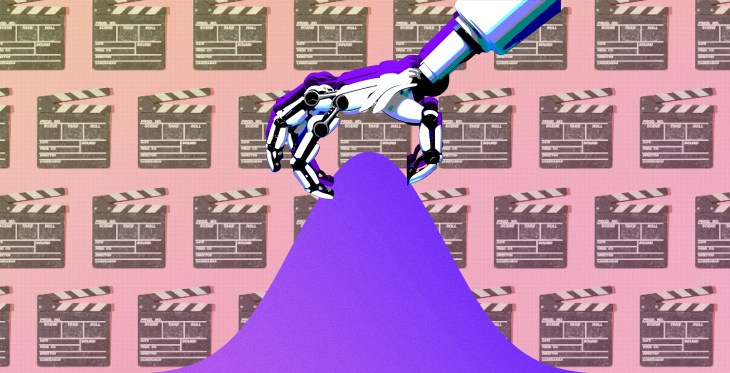Adobe debuted its Firefly generative AI initiative last month, showcasing first a model trained on its own Adobe Stock images, and then yesterday it unveiled what it’s working on initially around video and audio editing. The features sound like powerful, efficiency-enhancing additions to a creative workflow — but they also sound poised to replace a significant chunk of the work currently done by real humans, even if that work isn’t exactly earning massive accolades or peer recognition.
Here’s what Adobe tipped in its announcement:
- Text to color enhancements: Change color schemes, time of day or even the seasons in already recorded videos, instantly altering the mood and setting to evoke a specific tone and feel. With a simple prompt like “Make this scene feel warm and inviting,” the time between imagination and final product can all but disappear.
- Advanced music and sound effects: Creators can easily generate royalty-free custom sounds and music to reflect a certain feeling or scene for both temporary and final tracks.
- Stunning fonts, text effects, graphics and logos: With a few simple words and in a matter of minutes, creators can generate subtitles, logos and title cards and custom contextual animations.
- Powerful script and B-roll capabilities: Creators can dramatically accelerate pre-production, production and post-production workflows using AI analysis of script to text to automatically create storyboards and previsualizations, as well as recommending b-roll clips for rough or final cuts.
- Creative assistants and co-pilots: With personalized generative AI-powered “how-tos,” users can master new skills and accelerate processes from initial vision to creation and editing.
What is perhaps most startling about updates like this from companies that essentially own the entire professional creative workflow is the casual way it describes upcoming automated features that currently account for thousands of hours of paid labor by gainfully employed individuals. To be clear, I’m not decrying the progress of technology here: To the contrary, I’m mostly watching the rapid pace of innovation around generative AI with awe and wonder.
But you can both celebrate something and worry about its negative knock-on effects, and in fact, everyone involved should simultaneously hold both of those things in their heads.
As the headline suggests, what’s most in danger of future extinction within these bullet points provided by Adobe is effectively the fat middle of the bell curve of multimedia editing work. Color grading work to achieve a desired look is certainly going to make “the time between imagination and final product all but disappear,” but that time isn’t an inconvenience for probably upwards of tens of thousands of creative pros — it’s the meat of their work and billable hours. Likewise for composing and recording generic music for use in low-budget projects; crafting typefaces and titles for everything that isn’t a Hollywood blockbuster; and storyboarding and curating/maintaining b-roll footage libraries.
The same counterarguments apply here that are typically levied in discussions of innovation versus displaced current-day jobs: These will all just free up time previously dedicated to busywork to allow pros to focus on “real” creative work. Plus, they’ll only ever account for the sub-par and mediocre work in the fields where they apply, leaving the truly excellent stuff to the human pros.
These are fine arguments, and true to an extent, but it ignores some fundamental realities. The first is that people are not made to be doing “high-value” work all of the time — doing busywork contributes to a natural rhythm of productivity that ebbs and flows, but that does so in a healthy way.
The second is that most people make their living being mediocre, by definition. Even if all that the AI can ever achieve is “workmanlike” results, that’s the vast majority of the work done in creative industries. Most editors and colorists are not producing Blade Runner 2049; they’re making shampoo commercials or HR training videos.
I feel the need to reiterate that I’m not arguing for a cessation of development of these kinds of features, and in fact I’m excited to see their progress and try them out for myself. I am, however, advocating for more discussion and consideration of what the advent of these kinds of technologies mean for workforce transformation.
Major revolutions in how people work do happen, and obviously society moves forward each time. But it’s a mistake to think these things occur passively and in a fixed manner. Ensuring they occur with the least amount of negative impact on the people involved requires careful forethought, intention and planning — all of which should be baked into the process right alongside the innovation and iteration by the same people doing that work, too.
